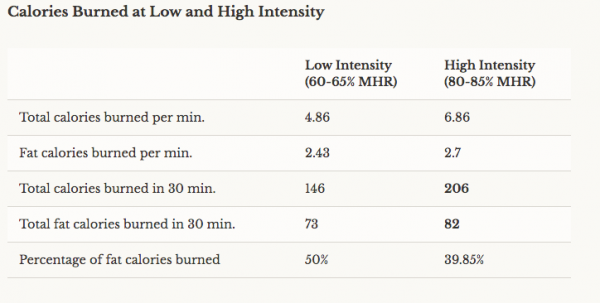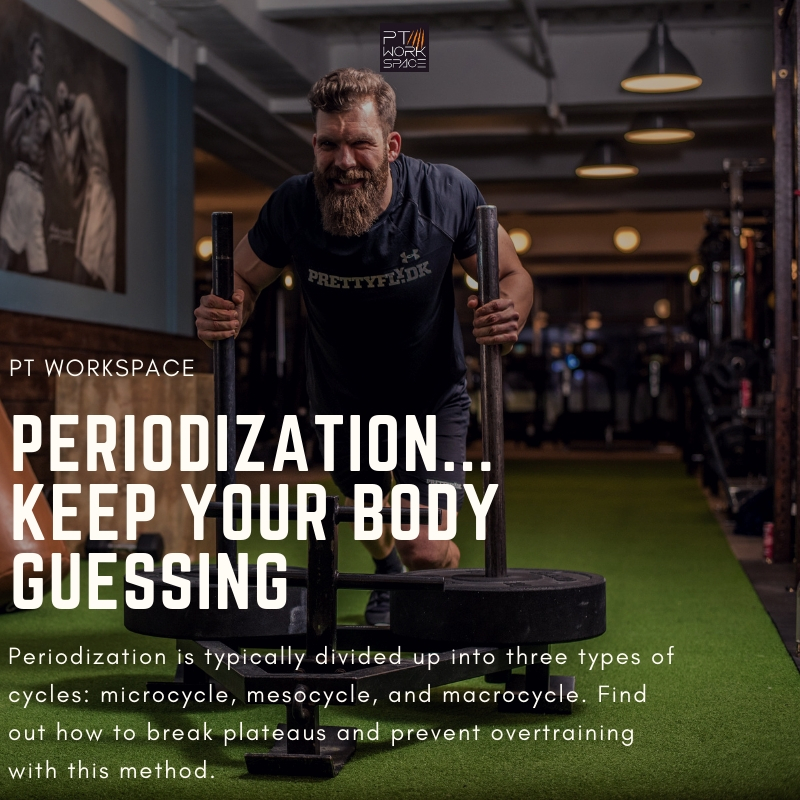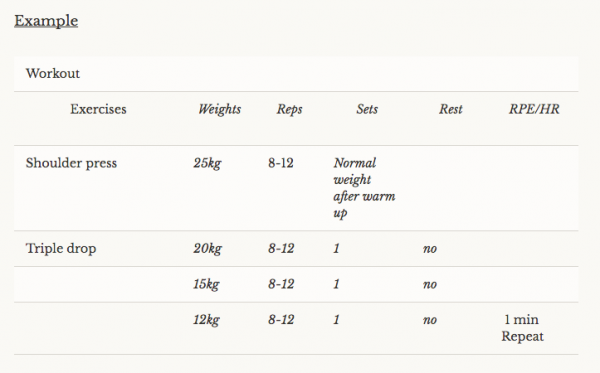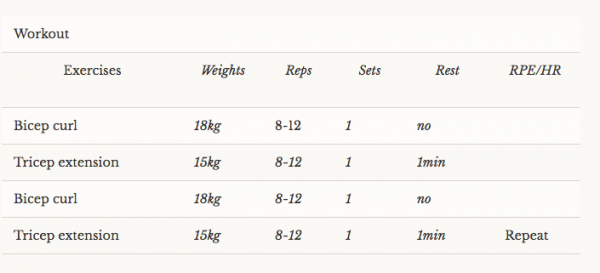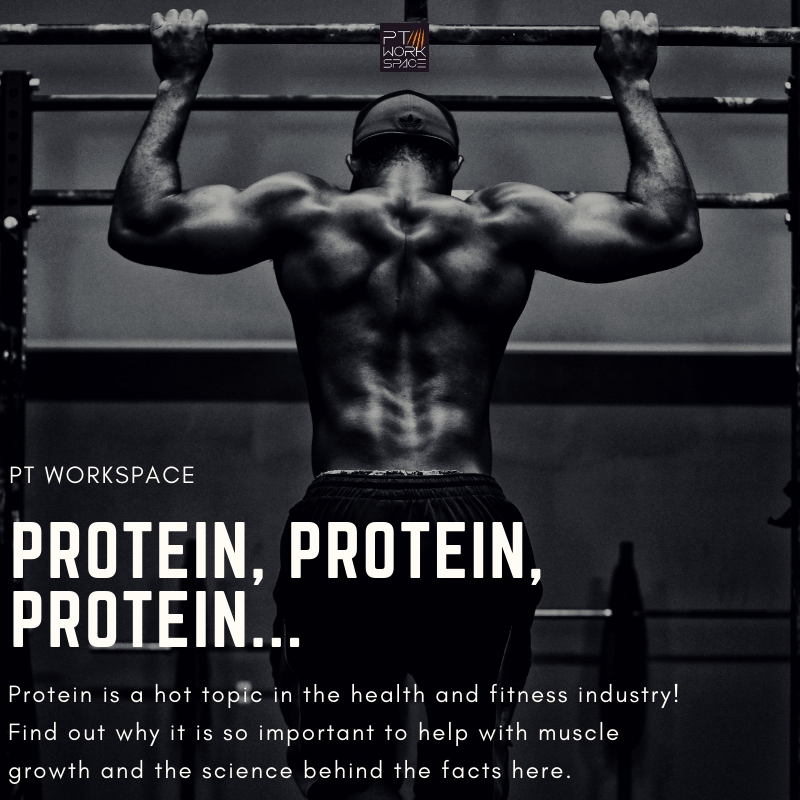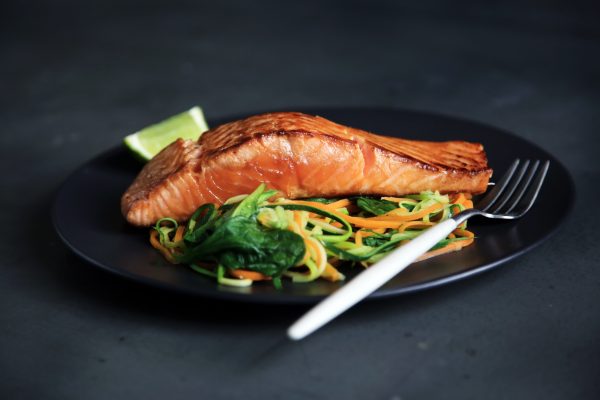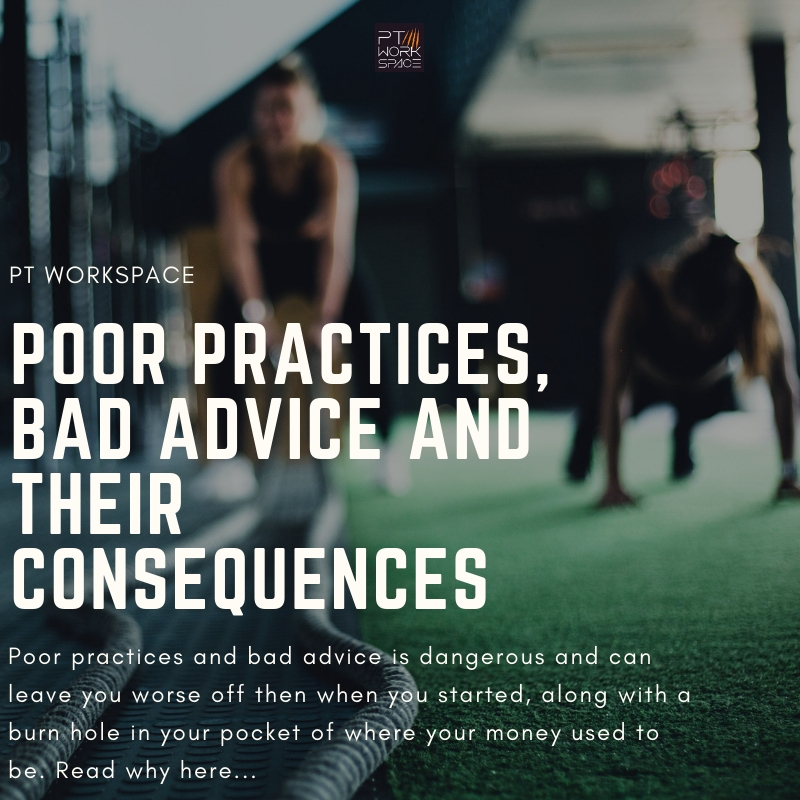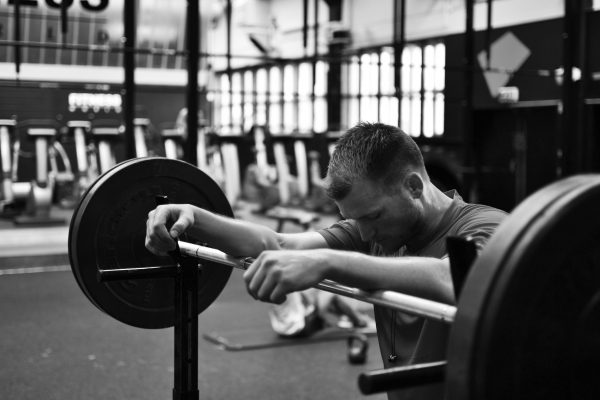How many questions will you get right…No peeking!
To lose a 1lb of fat, you need to consume 3,500 less calories a week?
FACT or FICTION?
Answer: FACT
Because 3,500 calories equals about 1 pound (0.45 kilogram) of fat, you need to burn 3,500 calories more than you consume to lose 1 pound. So if you cut 500 calories from your typical diet each day, you’d lose about 1 pound a week (500 calories x 7 days = 3,500 calories). It isn’t quite this simple, because you usually lose a combination of fat, lean tissue and water. Additionally due to changes which can occur in the body as a result of weight loss, you may need to continue to decrease calories in order to continue losing weight steadily.
Stretching will help prevent injury and reduce muscle soreness?
FACT or FICTION?
Answer: FICTION
“The evidence from randomised studies suggests that muscle stretching, whether conducted before, after, or before and after exercise, does not produce clinically important reductions in delayed-onset muscle soreness in healthy adults.” Conclusion by Authors Herbert RD1, de Noronha M, Kamper SJ. Musculoskeletal Division, The George Institute for Global Health.
On average we can only gain 2 pounds of muscle for men a month and 1 pound for women?
FACT or FICTION?
Answer: FACT
Here’s how fast you can expect to build muscle on average:
Average Natural MAN: between 0.25 and 0.5 pounds of muscle per week (or about 1-2 pounds of muscle gained per month).
Average Natural WOMAN: between 0.12 – 0.25 pounds of muscle per week (or about 0.5-1 pound of muscle gained per month).
We’re strictly talking MUSCLE, not WEIGHT. Besides actual muscle, weight gained throughout the week could be (and often is) fat, water or glycogen. We’re not talking about any of those here.
![]()
Lifting the heaviest weights will help me develop muscles fastest.
OR
Increasing reps rapidly will tone up abdominals like 20 Ab crunches.
“two birds one stone”
FACT or FICTION?
Answer: FICTION
Hypertrophy can be broken down into two types of categories myofibrillar and sarcoplasmic. Each of these specific types of muscle hypertrophy will result in increasing size of cells, but not of equal effect.
Sarcoplasmic hypertrophy is focused on increasing the actual size of the muscle, and less on increasing strength.
Several repetitions (generally 8–12 for bodybuilding or 12 or more for muscular endurance) against a submaximal load facilitate mainly sarcoplasmic hypertrophy (professional bodybuilders and endurance athletes).
Myofibril hypertrophy will focus more on strength increase and less on an increase in the size of the skeletal muscle.
80 to 90% of the one-repetition maximum for 2–6 repetitions (reps) causes myofibrillated hypertrophy to dominate (as in powerlifters, Olympic lifters and strength athletes).
Running will help me shape my legs and bum?
FACT or FICTION?
Answer: FICTION
Increasing lean muscle in the legs and bum will impact shape and definition alongside lower body fat percentage. Running will be effective cardiovascular exercise and reduce body fat, to increase lean body mass resistance training is required over conventional beliefs on running to achieve these goals.
Squats with weights
Obviously helps to build your leg muscles (including your quadriceps, hamstrings, glutes and calves), and can also create an anabolic environment, which promotes body-wide muscle building.
Increasing lean muscle in the legs and bum will impact shape and definition alongside lower body fat percentage. Running will be effective cardiovascular exercise and reduce body fat, to increase lean body mass resistance training is required over conventional beliefs on running to achieve these goals.
Low intensity cardio is most effective to burn calories and lose weight?
FACT or FICTION?
Answer: FICTION
Although it’s technically true that exercising in the so-called “fat burning zone” (at a lower intensity level of about 60% to 70% of maximum heart rate) does use a higher percentage of fat calories for fuel, the overall total calories burned is still fairly low. The reason is simple. Fat is a slow-burning fuel that requires oxygen to convert it to a usable energy, so it’s great for long, steady, slow exercise, like backpacking, or cycling a long distance. Most people have enough stored body fat to fuel low level activity for days and days without running out of energy, but if you want to go fast, work all-out, or burn the most calories per minute, you need to rely on the faster-burning carbohydrate (glycogen) for energy. Converting fat to fuel takes longer, and requires lots of oxygen. In the strictest definition, this is called aerobic metabolism.
The real question is If your goal is weight loss, and burning calories is the way you are trying to lose weight, you are better off exercising at a higher intensity 2-3 times per week, and burning more overall calories from both fat and stored glycogen.
Thanks for reading
PT Workspace Team
P.S If you are interested in finding out about personal training or studio hire at PT Workspace you can contact [email protected]. In addition why not take a look at some of the personal trainers who already work with us here.
Periodization… Keep Your Body Guessing
Periodization is the most significant resistance training tools you can use, to break plateaus and prevent overtraining. This system of training is typically divided up into three types of cycles: microcycle, mesocycle, and macrocycle.
- The microcycle is generally up to 7 days.
- The mesocycle may be anywhere from 2 weeks to a few months and can further be classified into preparation, competition, peaking, and transition phases.
- The macrocycle is for the total year or season and is understood to be the overall training period.
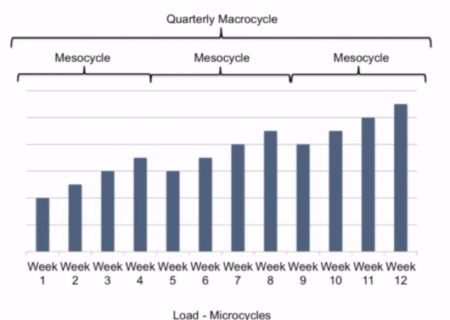
“Most comparative studies have demonstrated the superiority of periodized over non-periodized programs in terms of greater changes in strength, body composition, and motor performance (Fleck 1999)”
It is highly recommended that a period of at least 3 weeks is ideal to see significant benefits and adaptations, within areas such as power/speed and strength work. Many professionals accept that keeping the body guessing is the key to development, but what is the most efficient way in which to add periodization to your exercise routine? Try…
- Choice of exercises
- Order of exercises
- Resistance or load
- Number of sets per exercise
- Number of exercises per muscle group
- Repetition range
- Type of contraction
- Speed of movement
Commonly people change the exercise variety (for example press up to a chest press) because if you alter load, or repetition you will have an effect on the adaptation of the muscle. This could be sarcoplasmic hypertrophy commonly found with reps of 8-12, best suited to muscles size development (cross sectional area) found in most body recomposition programs.

Drop sets
Drop sets… You mainly focus on reducing the weight through progressive sets without rest. Great for damage and really will have you feeling the burn from the reduced rest periods. Work on your typical weight for 1 set, and reduce with 3 drop, then reducing the weight as needed usually 20-30 percent of your 1 rep max, theses sets are known as triple drops.
Often repeat for 2-3 sets or used as a fatigue bearing exercise at the end of a muscle specific split exercise routine.
Supersets
Supersets can be great way to increase intensity, and used in normal split routines. By using supersets you can inflict maximum damage in a short period of time into multiple muscles.
Repeat for 3/4 sets for maximal hypertrophy, this can be used by combing opposing muscles which can fatigue without reducing power output.
Such as
Bicep-Tricep
Or
Chest-Back
Most fitness professionals understand how to best change intensity and volume to progress their client or athlete across their training phases. So make sure if you are going make a change in one of these variables, you should research or consult a professional to discover if it benefits your end goal, rather than hinder development.
Thanks for reading
PT Workspace Team
P.S If you are interested in finding out about personal training or studio hire at PT Workspace you can contact [email protected]. In addition why not take a look at some of the personal trainers who already work with us here.
What is Protein?
Protein makes up all the cells in your body and is vital to repairing and making cells for survival. It is important for fueling growth through youth, adolescence and pregnancy. The main component of protein is Amino acids, essential Amino acids must consume through our diet and non-essential is readily produced in our bodies. Protein helps increase lean muscle mass and aids recovery when coupled with training, there should be massive importance placed on protein intake to transform your body. The bodybuilding industry has played a large role in bring the effects of protein to the forefront and much research has supported the intake of protein with links to lean muscle growth.
How Much Protein?
Before we continue any further we want to make a valid point that if you are training to lose fat and improve your shape, then this area of muscle growth will play a massive part in transforming your body so read carefully. It is recognised that for every pound of body weight it is advisable to consume a gram of protein. Making sure your body is fueled with protein will often enhance the anabolic effects of growth within the body when training. The suggested amount of protein for muscle growth can be higher in competitive athletes which may consume far more to maximise growth potential. Protein intake in the morning after a long time spent without intake and post workout due to the body’s need to repair (within 30 mins) has shown to best support muscle growth.
This coupled with consistent intake throughout the day and with small meals will make for a sure recipe for success. We advocate preparing meals and finding a protein source through food alone, but protein shakes can be advisable for those needing higher levels of protein intake for example, large males or advanced bodybuilders and athletes as most people should find sufficient grams of protein throughout diet.
Some research will support whey protein supplements for post workout due to the fast digestion of the protein to start the process of recovery therefore faster fueling of your body for growth. A rule of thumb is to make sure protein intake is sufficient before looking to supplements .
Cutting and Bulking
When losing weight (deficit) protein intake must be consistent for maintaining the lean muscle tissue which gives men and women their nice figure, and will promote utilising fat over muscle. It is documented that managing a calorie deficit or surplus will dictate the outcome of a transformation, and supported with high protein diet will have benefits for muscle growth. Many men who have read articles supporting bodybuilding will use the terms” Cutting and Bulking” which also refers to a deficit and surplus.
We would advise all men and women looking to increase their percentage of muscle to go through a deficit when transforming their body unless they have low body fat already (near 10%) as they may find adequate results in muscle growth especially if they have not trained with resistance before implementing a surplus to maximise growth potential.
Foods to eat which are high in protein:
- Meats
- Fish
- Eggs
- Soy
- Beans
- Grains and Nuts
Please take notice of lean sources of protein such as chicken and Turkey over rival red meat sources, if trying to keep calorie intake low. Some research supports removing egg yolks to reduce cholesterol and calories if using them as a source of protein more than 4 times a week.
If when planning your diet make calculations of your BMR and activities levels partnered them with balanced meals to reach your calorie targets for either working within a Deficit or Surplus. Always trying to keep you protein intake high and carefully choosing when to eat your carbohydrates and fats to benefit energy levels.
Thanks for Reading
PT Workspace Team
P.S If you are interested in finding out about personal training or studio hire at PT Workspace you can contact [email protected]. In addition why not take a look at some of the personal trainers who already work with us here.
Poor Practices, Bad Advice and their Consequences
Choosing the right support at the beginning of your fitness journey is important for many reasons, some obvious and others not so much so. The obvious being that you want your hard earned money to show results, if you are investing your time and energy into following a program provided by a professional, you want to see positive changes inside and out. You are perfectly within your right to feel that way! However poor practices and bad advice is dangerous and can leave you worse off then when you started, along with a burn hole in your pocket of where your money used to be.
The UK fitness market is estimated to be worth £5bn, as the number of gym locations surpasses the 7,000 mark, this excludes many of the areas of coaching and new unregulated jobs have been born. Some quick fix courses lead by providers using clever marketing tactics ‘earn 60k a year in 12 weeks’ (for example) offer accreditation in areas such as exercise, fitness, nutrition and means becoming qualified can be very fast with little to no experience. Not only does it undermine the individual looking to make a good honest living as a fitness professional but the industry as a whole. Education within this sector is important as a building block in which experience is formed, so advice and direction when given in the future is safe. If you are unsure about the experience and qualifications of your personal trainer then we recommend you…
- Request testimonials
- Ask for qualifications and check accrediting bodies
- If unsure of qualification type Google (boring I know) and do a bit of research on the course
- Keep away from multiple sales offerings (bad sign for confidence in delivering one service)
- Below is a few respected governing bodies you should look out for when asking for qualifications in fitness.
If you are wondering in what way poor practices and bad advice can lead to detrimental consequences, then you will not have to wonder for long. For example lifting weights can put incredible strain on the human body, and if your body form is wrong this can lead to back problems, severe injury, slipped discs and any other number of incredibly painful experiences which could lead to time off work, along with massive setbacks in your health. It is important that any fitness or health advisor can offer safe advice which takes into account your wellbeing at all times. Try not to worry, this is not to say that anything bad will happen to you, but you can take preventative measures by doing a little homework before you sign up with a professional without knowing their background and experience.
If you are looking for a personal trainer and still feel a little unsure, have a quick read of our blog “What you should consider when choosing the right personal trainer for you”.
P.S If you are interested in finding out about personal training or studio hire at PT Workspace you can contact [email protected]. In addition why not take a look at some of the personal trainers who already work with us here.

